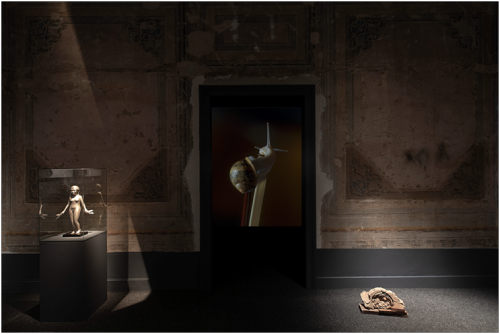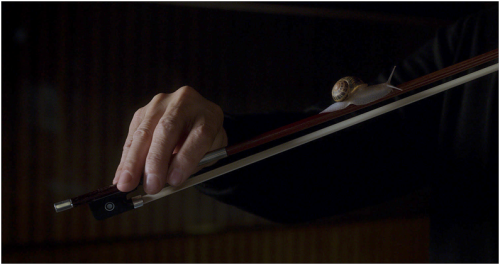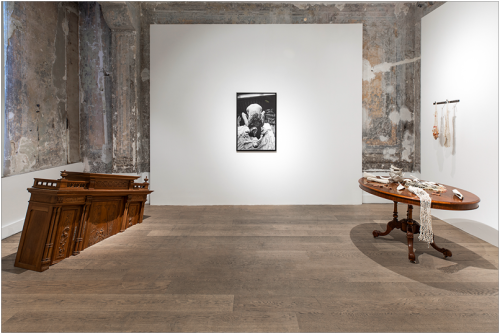
As a second time fellow at ANAMED, it was impossible for me not to compare the two experiences that are 13 years apart. During my first fellowship in 2008—2009, I was a PhD candidate working on completing my dissertation. This remarkable period in my life was also marked by the motivation received from being in the center of Beyoğlu’s vibrant art scene, with its elaborate bookstores, theatres, meyhanes, coffeeshops, and museums. During that time, fellows of ANAMED traveled extensively as a group, visiting several of Turkey’s important cultural sites.
Now, as a senior fellow this year, I am grateful to be a part of the ANAMED family. Things have changed, of course. The building that was partly under construction during my first fellowship term is now completed and offers its premises to a much wider audience. The institution has also expanded as a much broader research hub accommodating a multitude of interests. Witnessing this unique evolution makes one feel truly lucky. That said, I cannot help but feel nostalgic for the time that we experienced this space prior to Covid’s destabilizing role in our lives. At the risk of sounding dark, I decided to write about a recent experience which made me reflect on what has changed for humanity in this “post-pandemic” period. Although I would like to write the phrase post-pandemic without the quotation marks, it seems too premature for me to do so. Without further ado, I would like to invite the reader to join me on a stroll in one of the most touching art shows that took place in Istanbul this year.

Anri Sala,“If and Only If” ©Nazlı Demirel (With permission of the artist and Galerist)
Beyoğlu, which has now acquired a completely different texture since my initial fellowship, still houses some of the most noteworthy galleries in the city. Last February, I had the chance to visit a thought-provoking show at Galerist, which is located in the 19th-century building formerly known as the “Passage de Petit-Champs” on Meşrutiyet Caddesi. Cleverly curated by Burcu Fikretoğlu, this poignant group show, titled after Leonard Cohen’s “True Love Leaves No Traces,” feels like an homage to the feelings with which the pandemic has left us. While the pandemic stormed through our lives, changing the world order as-we-knew-it, we slowly adapted to our new circumstances without realizing the level of adjustment it took. The works that make up this moving show each convey a different layer of how one experienced and dealt with the unfamiliar and the unforeseen. The layout of the space altered by the heavily cascading velvet curtains, isolating one space from the next, delivers a dramatic effect where one initially feels a bit constrained and claustrophobic but yet surprisingly hopeful and excited about the unpredictability of what to expect.
Fikretoğlu explains that she conceived the forming ideas of this show during the period of long-lasting lockdowns in Turkey. Her impulse was to revisit perceptions of existence and nothingness while attempting a re-experience of such aspects that were unquestionably absent in our lives as image, memory, and tactility. So the double-sided velvet curtains, with their soft yet heavy feel, invite the human element, offering the viewer an invitation to crack the door open to the world that is now altered.
Upon entrance, one is startled by a remarkable scene exposed in Alfredo Jaar’s photograph “Milano” (1946), where the artist captured Argentine-Italian painter Lucio Fontana, having returned from Argentina after the war, standing in the ruins of his former studio, completely demolished in the war. This work is a testament (perhaps more than one realizes when meandering through the show) to the human capacity of resurgence even after the most devastating of struggles. A common theme of most of the works in this show is the intrinsic motivation in humans to find (or rediscover) life and art.

Alfredo Jaar, Milano, 1946: Lucio Fontana visits his studio on his return from Argentina.
The short fragment from Claire Denis’s film “l’Intrus” (2005), a film inspired by the latephilosopher Jean Luc Nancy’s essay of the same title, is a momentous piece in this show. The short preview depicts a man who is on a mission to find a heart that his ailing body will accept. The man—like Nancy himself—has a heart condition for which he needed a heart transplant. Accepting what is extraneous to us, alien to our habitat, and not being able to have control over somebody else’s heart in one’s own skin are among the finest questions asked both in the film and in the essay that inspired the film project. The man who goes as far as Asia to find the appropriately matched heart for himself is the same man who is long estranged from his son and the ones that would be willing to give him love. The film brings to light the irony of the human desire for the continuity of life even if one is completely cut off from all the vital qualities that make life worth living.

Ariana Papademetropoulos, “True Love Leaves No Traces” ©Nazlı Demirel (With permission of the artist and Galerist).
The show makes one ponder compossibility. We are at once faced with such truths as the end of life and the search for life, the uninvited stranger and the welcomed guest, the bountiful feast and the desolate dinner table, and the pumping heart and the life support machine. The possibility and the ability of coexisting antinomes is what makes each experience unique and life meaningful.

Hale Tenger, “Happens to the Heart” (2022). ©Nazlı Demirel (With permission of the artist and Galerist)
Among the number of touching works, one that eternally transformed me was Hale Tenger’s performative installation. Also taking its name from one of the last songs that Leonard Cohen wrote, “Happens to the Heart” is the epitome of the void that is already open—in Nancy’s own terms [déjà ouvert]—in one’s chest. Tenger’s installation of orange silk fabrics flowing in the dramatic light immediately captivates the viewer upon entering the dark and quiet space. At first, one hears only the sound of the piano keys . As the eye gets accustomed to the dark setting, one becomes struck by the delicate movement of the fabrics. This kinetic movement, accentuated by the defined edges of a square box, forms a sharp contrast with the mesmerizing softness and transparency of the silk. As one acculturates into this captivating setting, one realizes the sound of the machine that enables this magical movement. The installation replicates the movement of a heart on life support, yet one notices the void that is already present inside the square-shaped space. Can the thing that is missing truly be found?
This spectacular group show also includes the works of Necla Rüzgar, Kostis Velonis, Silva Bingaz, Anri Sala, Stefania Strouza, Ismene King, and Ariana Papademetropoulos. “True Love Leaves No Traces” is a documentation of the reconciliatory gesture that we humans make toward life even in the most fragile heights of our existence.

